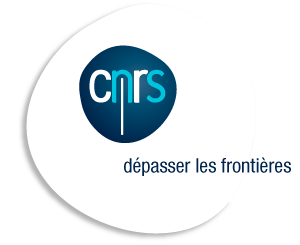David and his wife were originally from South Africa, a country to which they remained strongly attached. After his university studies in Cape Town, David joined the Lamont-Doherty Geological Observatory near New York in 1963. The Lamont was created after the second world war and represented the lead of the United States in oceanography. The development of oceanographic instrumentation and the measurements made by the research vessel of Lamont, the "Vema", greatly contributed to the elaboration of the plate tectonic theory: Xavier Le Pichon, also at Lamont at that time, was one of the theory's pioneers. Jean Francheteau was at Scripps, another emblematic institution for American oceanography. The three scientists arrived between 1968 and 1971 at the CNEXO, a new French organization dedicated to the Exploration and Exploitation of the Oceans.
Several converging factors made this a new era for French oceanography: The creation of the CNEXO; the first CEO, Yves La Prairie, who managed to recruit a young researcher (Xavier Le Pichon) to create the Scientific Group of the CNEXO; the emergence of the plate tectonics theory, representing a new framework to study the Earth System; and the creation, within the CNEXO, of a technical capacity for oceanographic equipment. The operation "FAMOUS", French American Mid-Ocean Undersea Survey in 1974, the first scientific programme to operate submersibles, was the symbol of this new French oceanography.
David Needham participated in the preparation and in the dives of FAMOUS: it was the first detailed study of a mid-ocean ridge axis. The following two articles: Needham H.D. and Francheteau J. (1974) [1] and Francheteau J., Needham H.D. et al. (1979) [2], attest, for the first, of the first description of the axis of a mid-ocean ridge and for the second, the discovery of hydrothermal exchanges at the axis of a ridge. The mid-ocean ridge system, a major structure at the bottom of the oceans known only to a select few prior to 1970, was, less than twenty years later in all secondary education Earth Science textbooks.
The new fields of research that emerged from these discoveries needed to be nurtured. In this respect, David has played a leading role, through his research work and his contributions to scientific program development.
David was a former student of Bruce Heezen at Lamont. Bruce Heezen and Mary Tharp were behind the identification of the mid-ocean ridge system in the 60's. We all know their physiographic map. At this point in time, there were no multibeam mapping systems or GPS navigation.David pursued this work in Brest, compiling data obtained from different expeditions and elaborating cartographic documents with incomparable rigour. His documents have since formed the basis for more detailed surveys by means of modern techniques. An American colleague who was involved in an expedition led by David told of the ease with which he led them to the ridge axis. In so doing, he paid him a kind compliment by saying "we found the axis, just as if we already had the map ! Amazing !", whilst the objective of the expedition was precisely to map the axis. His work was for the benefit of the whole scientific community of varied disciplines: geophysics, geochemistry, the search for hydrothermal sites, biology and microbiology of hydrothermal site environments... Around ten years after the discovery of these sites, a molecule from hydrothermal biology was used to copy DNA. This strategy and discoveries emanate largely from David's work and the discussions he had with his colleagues. His office door was always open. Additionally, the contacts he had were not limited to the "ridge" topic: a colleague recalls a discussion in the 1970's on the carbonate compensation depth (CCD).
The elaboration of these programmes implied national and international collaboration. In France, we had the programmes "DORSALE" and "PNEHO". At the end of the 80's, John Delaney (USA), took the lead in establishing, with David, an international coordination programme for ridge studies: INTERRIDGE. David Needham played a major role in founding this programme and in particular its functional framework. Thirty years later, the structure is on-going, its office in currently in Paris. Mention should also be made of FARA, a bi-lateral programme between the USA and France during the 90's for which David led the coordination on the French side: this programme produced three expeditions: a mapping survey led by David, an American sampling expedition based on the mapping performed by the French survey and a Nautile dive expedition. We may further cite his contribution towards a cooperation with Russia and his help in elaborating an European programme both through making his maps available and through his international relations.
David was head of the Marine Geoscience Department in Ifremer from 1982 to 1986. His advice was sought a number of times for problems pertaining to international affairs. He was extremely good at analyzing the different facets of a situation. He was skilful in adapting to situations and addressing an audience and weighed every word of a written document.
His mother tongue was a precious asset for this exercise. If we add the honesty and rigour which characterized David, several of his colleagues believe he could have held a diplomatic posting.
David retired in 1999. His colleagues all remember his immense kindness.
David passed on 29th January 2018.
Text by Henri Bougault (translated by Alison Chalm)




